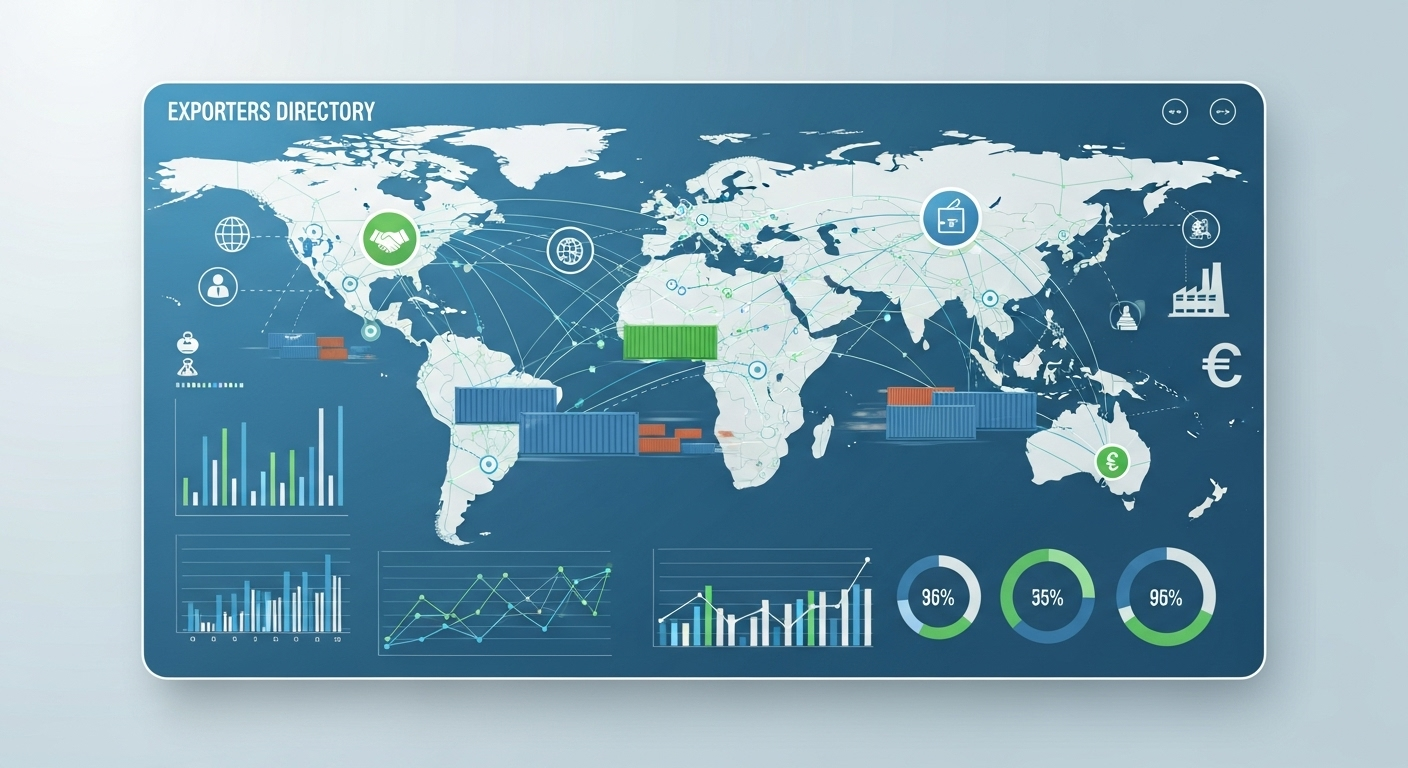Export Financing Options: Complete Guide to Funding Your International Business

Understanding Export Financing Fundamentals
Export financing is the lifeblood of international trade, providing the capital necessary to fulfill orders, manage cash flow, and expand into global markets. For many businesses, the gap between fulfilling export orders and receiving payment can create significant cash flow challenges.
This comprehensive guide explores various export financing options available to businesses of all sizes, from traditional bank loans to innovative alternative financing solutions. Understanding these options will help you choose the right funding strategy for your international expansion goals.
Why Export Financing Matters for International Business
International trade involves unique challenges that domestic transactions rarely face:
- Extended Payment Terms: International buyers often expect 30-180 day payment terms
- Higher Working Capital Needs: Inventory, shipping, and documentation costs require upfront investment
- Currency Exchange Risk: Fluctuating exchange rates can impact profitability
- Political and Commercial Risk: International transactions carry additional risks
- Compliance Costs: Export documentation and regulatory compliance require resources
Traditional Export Financing Options
1. Export Working Capital Loans
These short-term loans provide the capital needed to fulfill specific export orders:
- Purpose: Finance inventory, labor, and materials for export orders
- Loan Amount: Typically 70-90% of the export order value
- Term: Usually 12 months or less, aligned with the export cycle
- Collateral: Export receivables, inventory, or other business assets
- Interest Rates: Generally 2-5% above prime rate
Benefits:
- Immediate access to working capital
- Preserves existing credit lines
- Competitive interest rates
- Flexible repayment terms
2. Trade Credit Insurance and Financing
Protect your export receivables while accessing financing based on insured transactions:
- Coverage: Protection against commercial and political risks
- Financing Benefit: Use insured receivables as collateral for better loan terms
- Cost: Typically 0.1-2% of insured sales volume
- Coverage Limits: Up to 95% of commercial losses, 100% of political losses
Key Providers:
- Private insurers: Euler Hermes, Coface, Atradius
- Government agencies: EXIM Bank, UKEF, EDC
- Multilateral institutions: MIGA, ADB
3. Letters of Credit (L/C) Financing
Leverage confirmed letters of credit to access immediate financing:
- Pre-shipment Financing: Borrow against confirmed L/Cs to fund production
- Post-shipment Financing: Discount or negotiate L/Cs for immediate cash
- Cost: Typically 1-3% above bank's cost of funds
- Availability: Up to 80-90% of L/C value
Government-Backed Export Financing Programs
United States - Export-Import Bank (EXIM)
EXIM Bank provides comprehensive financing solutions for U.S. exporters:
Working Capital Guarantee Program:
- Guarantees up to 90% of qualifying working capital loans
- Maximum guarantee: $5 million
- Terms: Up to 12 months for single transactions, 36 months for revolving facilities
- Minimum U.S. content: No specific requirement for working capital
Export Credit Insurance:
- Coverage for commercial and political risks
- Coverage up to 95% of commercial losses
- Flexible policies for small and medium businesses
- Multi-buyer and single-buyer policies available
Medium-Term Financing:
- Direct loans and guarantees for capital goods exports
- Terms: 2-7 years
- Competitive fixed interest rates
- Minimum U.S. content: 50%
Other Countries' Export Credit Agencies:
- Canada: Export Development Canada (EDC)
- United Kingdom: UK Export Finance (UKEF)
- Germany: Euler Hermes (Hermes cover)
- France: Bpifrance and COFACE
- Japan: Japan Bank for International Cooperation (JBIC)
Alternative Export Financing Solutions
1. Invoice Factoring and Receivables Financing
Convert export receivables into immediate cash flow:
Export Factoring:
- Sell export receivables to factoring companies
- Immediate cash: 70-90% of invoice value
- Factor handles collection and credit risk
- Cost: 1-5% of invoice value plus interest
Receivables Financing:
- Use receivables as collateral for loans
- Maintain customer relationships
- Lower cost than traditional factoring
- Advance rates: 70-85% of eligible receivables
2. Supply Chain Financing
Leverage buyer credit strength for better financing terms:
- Reverse Factoring: Buyers facilitate supplier financing
- Payables Finance: Early payment discounts funded by banks
- Distributor Financing: Banks finance distributors to pay suppliers
- Inventory Financing: Finance inventory based on pre-sold orders
3. Trade Finance Platforms and Fintech Solutions
Technology-driven platforms offering innovative financing:
Digital Trade Finance Platforms:
- Faster processing and approval times
- Lower documentation requirements
- Competitive pricing through technology efficiency
- Real-time tracking and transparency
Key Platforms:
- TradeShift: Supply chain financing marketplace
- Marco Polo: Blockchain-based trade finance network
- Taulia: Working capital and supply chain finance
- PrimeRevenue: Supply chain finance solutions
- Drip Capital: Trade finance for emerging markets
Specialized Financing for Different Export Stages
Pre-Shipment Financing
Fund the production and preparation of export goods:
- Raw Materials Financing: Purchase inventory for export orders
- Manufacturing Finance: Cover labor and production costs
- Packaging and Documentation: Finance export preparation
- Pre-shipment Inspection: Fund quality control and certification
Shipping and Transit Financing
Cover costs during the transportation phase:
- Freight Financing: Pay shipping and logistics costs
- Insurance Premium Financing: Fund cargo and transit insurance
- Documentation Fees: Cover export documentation costs
- Storage and Handling: Finance warehousing and port charges
Post-Shipment Financing
Bridge the gap between shipment and payment:
- Export Bill Discounting: Advance funds against shipping documents
- Receivables Monetization: Convert receivables to immediate cash
- Collection Financing: Finance collection and follow-up activities
Industry-Specific Financing Solutions
Agriculture and Food Exports
- Commodity financing programs
- Seasonal working capital facilities
- USDA export credit guarantee programs
- Cold storage and logistics financing
Manufacturing and Capital Goods
- Equipment and machinery financing
- Project finance for large installations
- Medium-term export credits
- Performance bond facilities
Technology and Software
- Intellectual property financing
- Revenue-based financing for SaaS exports
- R&D and development cost funding
- License and royalty monetization
Services Exports
- Contract performance financing
- Professional indemnity insurance
- Advance payment bonds
- Milestone-based financing
Choosing the Right Financing Option
Factors to Consider:
1. Business Size and Stage
- Startups: Alternative lenders, government programs, angel investors
- Small Businesses: SBA programs, microfinance, factoring
- Medium Enterprises: Bank loans, trade credit insurance, supply chain financing
- Large Corporations: Syndicated facilities, capital markets, structured trade finance
2. Geographic Focus
- Developed Markets: Traditional bank financing, trade credit
- Emerging Markets: Export credit agencies, political risk insurance
- High-Risk Markets: Government-backed programs, specialized insurers
3. Transaction Characteristics
- Order Size: Large orders may qualify for better terms
- Payment Terms: Longer terms require more sophisticated financing
- Buyer Credit Quality: Strong buyers enable better financing options
- Contract Type: Different contracts require different financing structures
Application Process and Documentation
Common Documentation Requirements:
Financial Documents:
- Audited financial statements (2-3 years)
- Tax returns and business licenses
- Cash flow projections and business plans
- Bank statements and credit references
Export-Specific Documents:
- Export orders and sales contracts
- Letters of credit or payment guarantees
- Shipping and insurance documentation
- Export licenses and permits
- Customer financial information and credit reports
Application Tips:
- Prepare comprehensive financial projections
- Demonstrate export experience and expertise
- Highlight risk mitigation strategies
- Show diversification across markets and customers
- Provide detailed cash flow analysis
Managing Export Financing Costs
Cost Components:
- Interest Costs: Base rate plus margin
- Facility Fees: Setup and maintenance charges
- Insurance Premiums: Credit and political risk coverage
- Documentation Fees: Legal and administrative costs
- Currency Hedging: Foreign exchange risk management
Cost Optimization Strategies:
- Compare multiple financing sources
- Negotiate based on relationship and volume
- Use government programs when eligible
- Consider alternative financing structures
- Hedge currency risks strategically
Risk Management in Export Financing
Key Risks to Address:
1. Credit Risk Management
- Comprehensive buyer due diligence
- Credit insurance or guarantees
- Diversification across customers and markets
- Regular credit monitoring and review
2. Political Risk Mitigation
- Political risk insurance coverage
- Government-backed financing programs
- Multilateral development bank participation
- Local partnership strategies
3. Currency Risk Hedging
- Forward contracts for known exposures
- Options for uncertain cash flows
- Natural hedging through cost matching
- Currency diversification strategies
4. Operational Risk Control
- Quality control and inspection processes
- Shipping and logistics insurance
- Documentation accuracy and compliance
- Performance bonds and guarantees
Building Strong Banking Relationships
Selecting the Right Banking Partners:
- International Presence: Banks with global networks
- Trade Finance Expertise: Specialized trade finance teams
- Technology Capabilities: Digital platforms and efficiency
- Competitive Pricing: Transparent and competitive terms
- Service Quality: Responsive and knowledgeable support
Relationship Management Best Practices:
- Maintain transparent communication
- Provide regular business updates
- Demonstrate consistent performance
- Explore multiple product relationships
- Participate in bank trade events and programs
Future Trends in Export Financing
Technology Integration:
- Blockchain-based trade finance platforms
- AI-powered credit assessment and pricing
- Digital documentation and processing
- Real-time tracking and transparency
Alternative Financing Growth:
- Peer-to-peer lending platforms
- Revenue-based financing models
- Cryptocurrency and digital payments
- Supply chain finance evolution
Regulatory Changes:
- Basel III impact on trade finance
- Know Your Customer (KYC) requirements
- Environmental, Social, and Governance (ESG) considerations
- Digital identity and verification standards
Action Steps for Securing Export Financing
Immediate Actions:
- Assess Your Needs: Determine financing requirements and timeline
- Evaluate Options: Compare traditional and alternative financing sources
- Prepare Documentation: Gather required financial and export documents
- Build Relationships: Establish connections with potential financing partners
- Start Applications: Begin the application process for priority options
Medium-Term Strategies:
- Develop comprehensive export credit policies
- Establish revolving credit facilities for ongoing needs
- Build track record with successful transactions
- Explore government programs and incentives
- Consider establishing overseas banking relationships
Conclusion: Fueling Your Export Growth
Access to appropriate export financing is crucial for international business success. With numerous options available - from traditional bank loans to innovative fintech solutions - businesses of all sizes can find financing solutions that match their needs and circumstances.
The key to success lies in understanding your options, preparing thoroughly, and building strong relationships with financing partners. Start early, diversify your funding sources, and always maintain strong financial controls and risk management practices.
Remember that export financing is not just about accessing capital - it's about enabling growth, managing risks, and building a sustainable international business. Choose financing partners who understand your industry, support your growth ambitions, and provide value beyond just funding.
Ready to expand your export financing options? Start by assessing your current needs and exploring the programs and solutions outlined in this guide. The right financing structure can be the catalyst that transforms your international business dreams into profitable reality.
Connect with experienced export financing professionals and successful international businesses on ExportDash to learn from their experiences and discover new opportunities.


